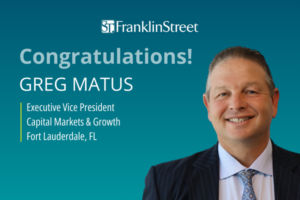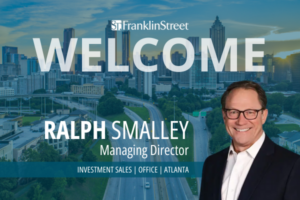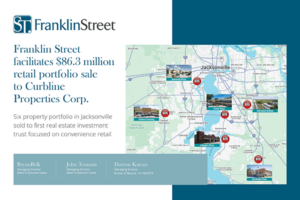Regulations and risk considerations have led to tighter underwriting standards for banks, but low interest rates are keeping borrowers engaged.
Long seen as the best source for construction financing, banks are navigating through a tight regulatory environment in order to see deals through to completion. Borrowers, on the other hand, are enjoying this period of low interest rates and available capital sources, even in the midst of tighter underwriting standards from banks.
“There’s always going to be money, it’s just a question of what rate and underwriting criteria it will be under,” says Michael Fay, principal and managing director of Avison Young’s Miami office.
Underwriting has become stricter as regulations like Dodd Frank and Basel III have made banks require more equity from borrowers. Under Basel III’s high volatility commercial real estate (HVCRE) regulation, which became effective on Jan. 1, 2015, borrowers must contribute at least 15 percent of the stabilized value of an asset, as opposed to the going-in equity. (The stabilized value is based off of appraisals.)
“The 15 percent equity requirement is the main thing putting pressure on our developer clients because they’re having to put a bit more money down into these deals to make sure that they stay under the HVCRE guidelines,” says Ben Miller, director of loan origination at Franklin Street’s Tampa headquarters. “Banks will consider these deals or write them in as an exception, but usually they only do that for their high-credit clients.”
Banks used to be able to count land as part of the equity in their underwriting, but Hugh Allen, vice president and commercial real estate director at TD Bank, says that the new regulations have required banks to only consider cash equity.
“It has to be cash equity based on the ‘as completed’ appraised value,” said Allen at the recent InterFace Carolinas Conference in Charlotte. “We’re seeing that have an effect, especially on space where it’s pre-leased. Intuitively you think that’s not a highly volatile transaction when it’s pre-leased, but we’re having to treat it as such because of the regulations in place now with increased equity requirements.”
The new regulations have made it difficult for developers to meet the higher equity threshold, especially years in advance of a development’s delivery and stabilization. The regulations have acted as a governor for new construction, according to Allen.
“It’s forcing developers to shrink down the volumes of deals they’d normally do in the course of business in an environment like we have today,” said Allen.
Multifamily developers are especially feeling the slowdown in construction financing volume as banks are wary of overbuilding. Banks also harbor construction risk and lease-up risk as developments have to be built on time and on budget.
“The brakes are on for urban multifamily in order to let the supply catch up with demand. Banks are waiting to see if the most recent wave or urban multifamily leases up and if increasing rental rates (part of the underwriting) can be sustained,” says Jeff Ackemann, executive vice president of CBRE Capital Markets. Ackemann says that multifamily rents are flattening in several markets and that providing concessions has become “the new normal” for apartment owners.
Ackemann also says that CBRE has reduced its multifamily finance activity in some of the Southeast’s top markets as new developments have yet to fully stabilize.
“We are definitely starting to tap the brakes a little in Atlanta, Charlotte and Nashville, particularly in urban locations that have seen an abundance of new multifamily supply hit the market,” says Ackemann.
Construction financing is not just tight for the multifamily industry. Casey Siggins, director of loan origination at Franklin Street, says that banks are wary of construction loans overall as a result of tighter regulations.
“We’re definitely seeing a reduced appetite for construction and development financing, not saying that there are banks that won’t still do it. It’s not as available as maybe it was two years ago,” says Siggins. “When banks do close one, they’ll do it a lower leverage than they did a year ago.”
Banks are also looking to diversify their own portfolios, so if they have a high percentage of their loan portfolio dedicated to construction, they’ll likely take a long look at the next construction financing opportunity.
“We’ve seen banks go into introspective views of their portfolios,” said Allen. “They see they’re a little heavy in construction so they slow down, or they’re extremely heavy in multifamily construction, so they stop.”
That’s not to say that banks have stopped completely on multifamily construction loans. Miami-based Ocean Bank recently provided a $50 million construction loan for a 282-unit luxury apartment development in Boca Raton, Fla. The loan represents 70 percent of the estimated total cost of $71.4 million.
Also in Florida, SunTrust Bank provided a $105 million construction loan to The Related Group and Rabina Properties for Icon Las Olas, a 45-story high-rise apartment development in Fort Lauderdale.
In Arlington, Va., Wells Fargo provided a $100.3 million construction loan to LCOR for The Altaire, a two-tower apartment development set for delivery in the second quarter of 2018.
Low Interest Rates
The Federal Open Market Committee (FOMC) passed on raising interest rates at its June meeting, citing diminished job gains, an inflation rate that remains below the committee’s 2 percent target and declining business capital expenditures, which have declined for the past two quarters according to the U.S. Bureau of Economic Analysis.
The 10-year Treasury yield, a benchmark rate for financing, has also declined to 1.46 percent as of June 27, the lowest rate since July 2012 when Spain’s economy was at its nadir. Global events such as the United Kingdom (UK) ending its membership in the European Union (EU) and the resignation of British Prime minister David Cameron have altered global finance markets, and experts have predicted that U.S. debt and real estate will benefit in the short term from the ambiguity overseas.
“Global uncertainty and a flight to quality have resulted in a significant amount of foreign capital buying U.S. debt, which is seen as both a safe haven and a decent return compared with European and Asian debt with tiny or negative interest rates,” says Ackemann. The compression of the Treasury yield has resulted in a very favorable long-term debt climate for U.S. commercial real estate.
“Buyers can still access affordable long-term debt at 100 to 150 basis points below historically low cap rates producing strong leveraged cash-on-cash returns. Commercial real estate is seen as a very attractive, risk-adjusted return compared to alternatives, so there is a lot of fresh capital entering the space,” says Ackemann.
Having cheap capital has been a boon for U.S. commercial real estate, and has helped the market recover by getting investors and developers involved following the downturn. If the low interest rate environment persists going forward, that will likely only encourage more financing activity.
“Having low interest rates and low capital costs always helps spur on development and acquisitions,” says Avison Young’s Fay. “People overall have known that we’ve been at historically low interest rate yields and interest rates, so there is some cautiousness moving forward because there’s only one way to go, which is up.”
Brexit Impact Going Forward
In a globally watched event, citizens of the UK voted to leave the EU by a margin of 52 percent to 48 percent in a decision popularly known as Brexit. Experts expect the Brexit will ultimately be a positive for the United States as investors are attracted to the strength of dollar-denominated, fixed-income assets like U.S. commercial real estate.
“Everyone is clamoring globally for safety and security, as well as returns. With the rates going down like they are, the Brexit is going to prolong the safety and security of U.S. real estate, and that’s a good thing,” says Fay.
As far as U.S. property fundamentals, Spencer Levy, CBRE’s head of research for the Americas, says the impact of Brexit will be “minimal,” but agrees with Fay that the U.S. real estate market will likely be the beneficiary of the decision.
“In the short term, U.S. gateway markets will likely be viewed with enhanced status as havens for global capital, but heightened uncertainty will carry risks for both investor sentiment and the real economy,” says Levy.
Before the Brexit referendum vote, it was a wide-held opinion that the FOMC would raise interest rates either at the July or September meeting, but Fay believes that the committee will again pass on the opportunity to raise rates in the near term.
“That’s totally off the table now,” says Fay. “It’s going to take two years for a full exit from the EU, and in those two years a lot is going to happen. We’re going to be in a long period of low interest rates, maybe five to seven years.”



